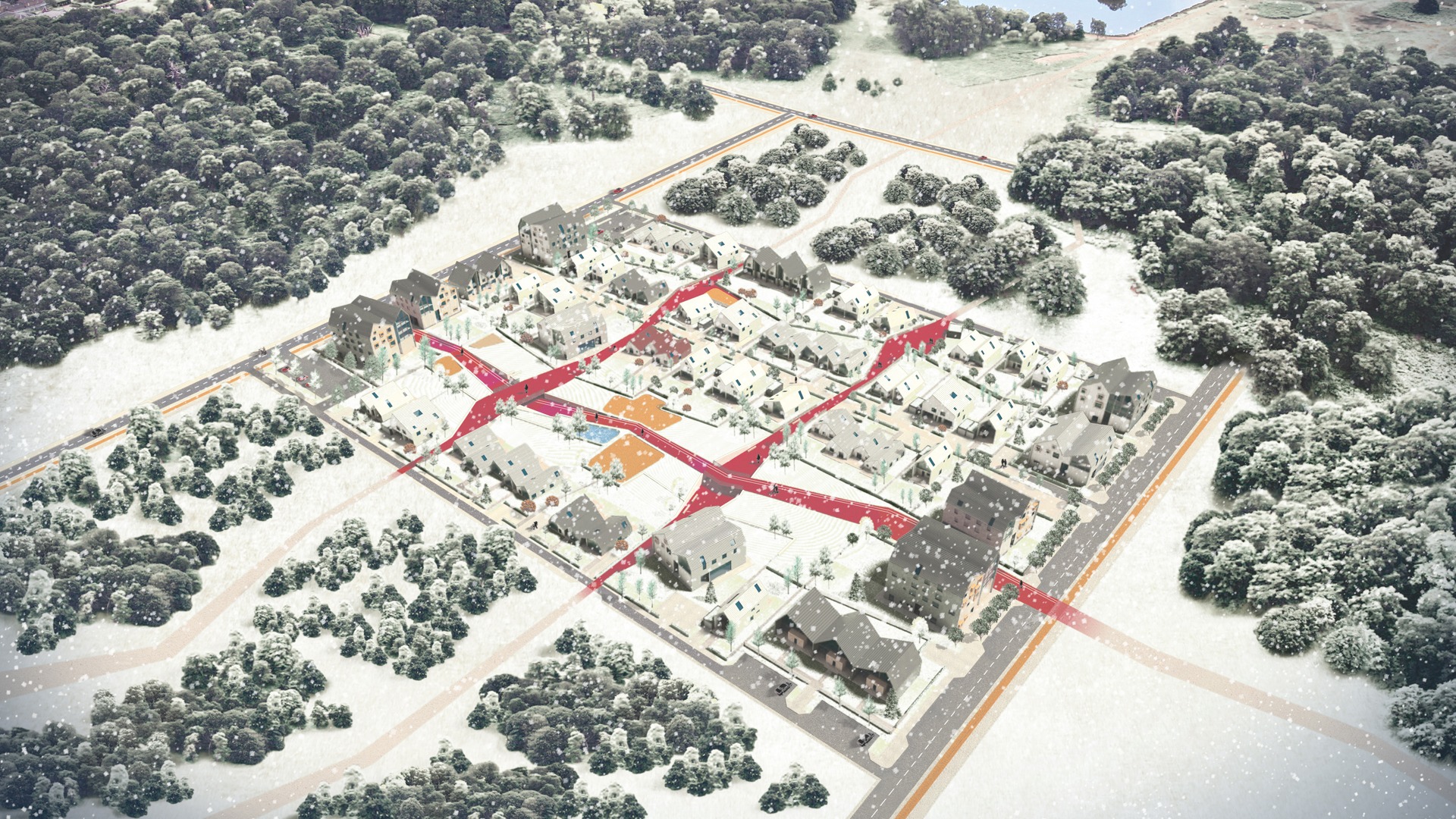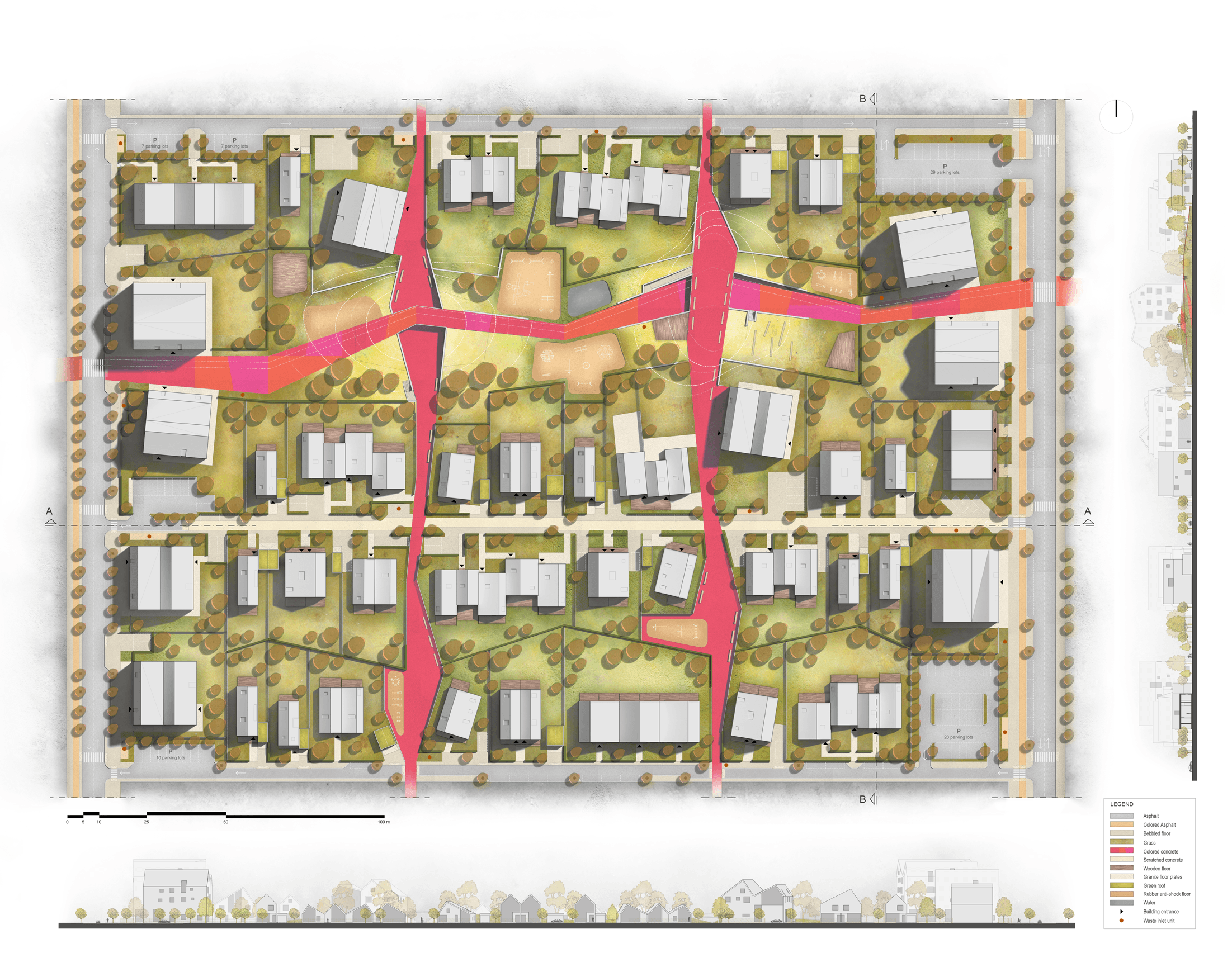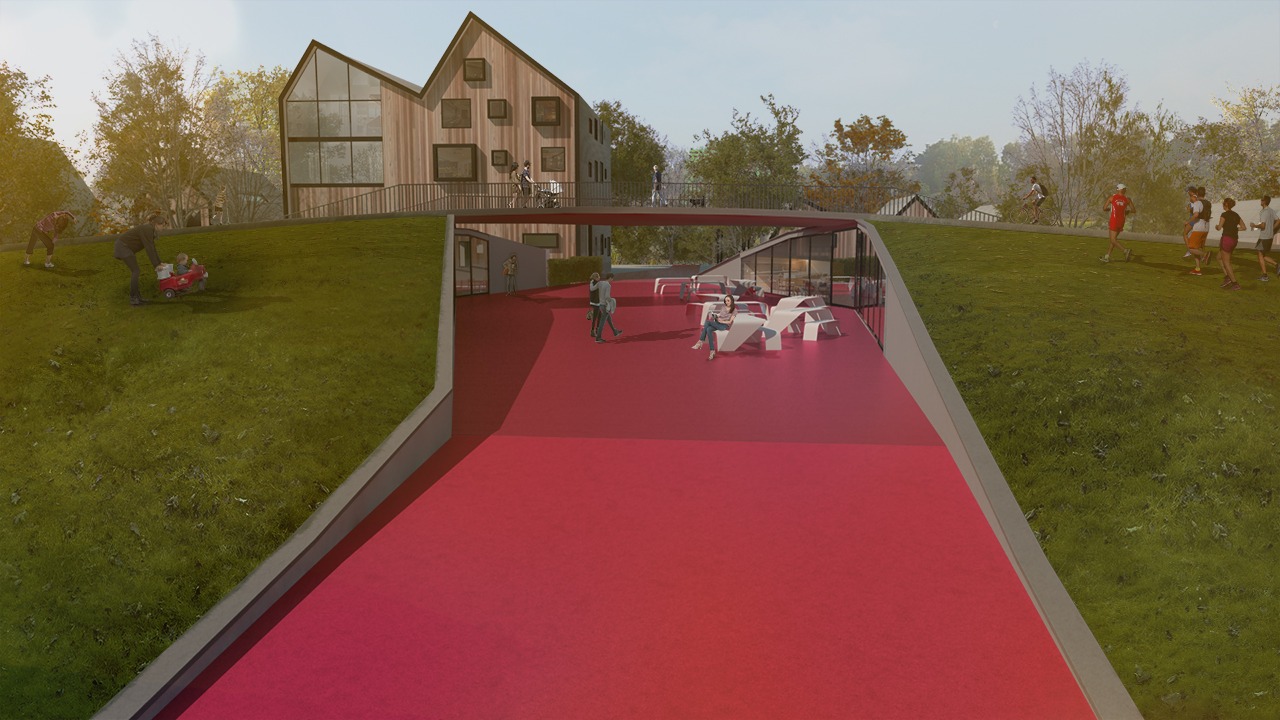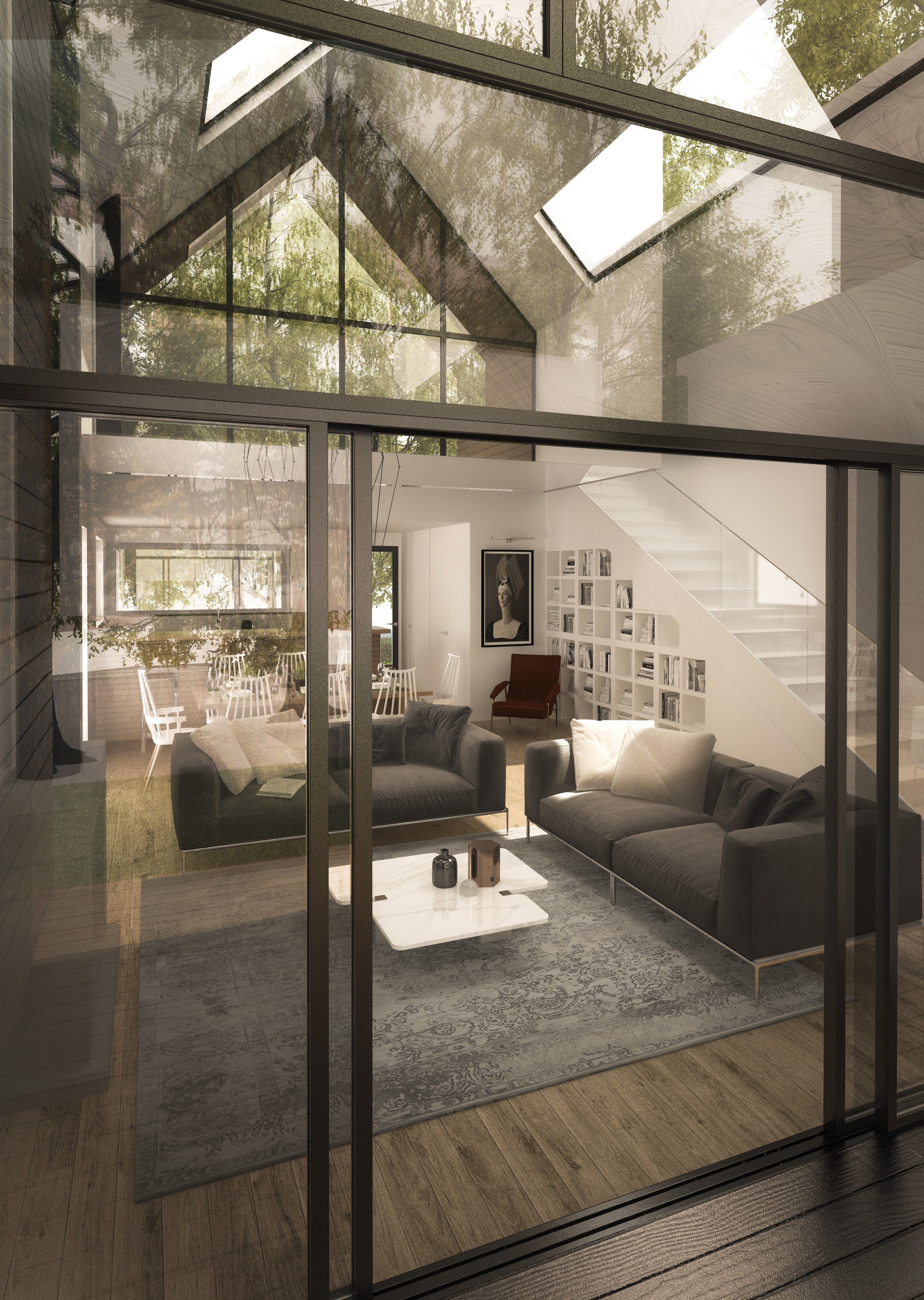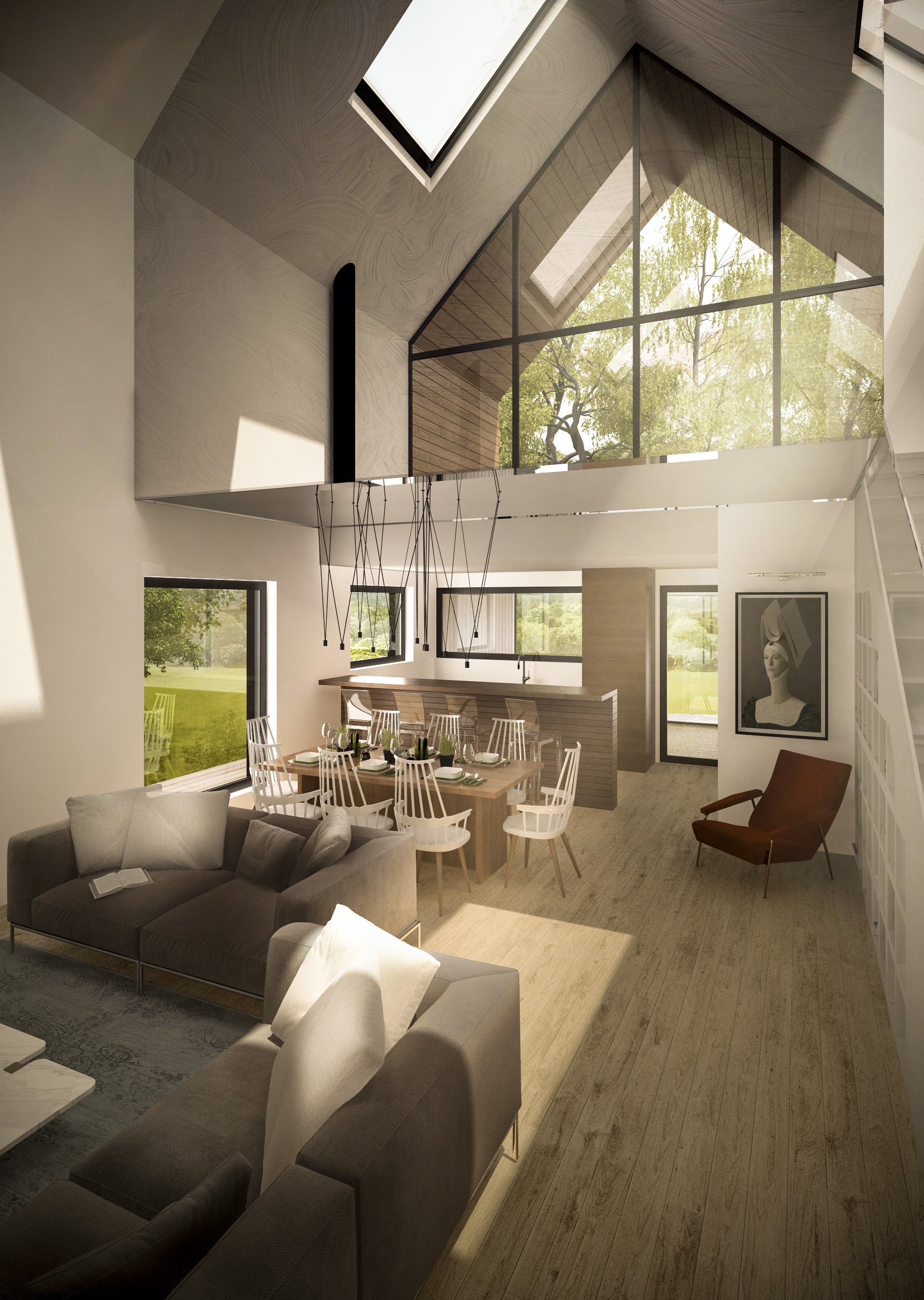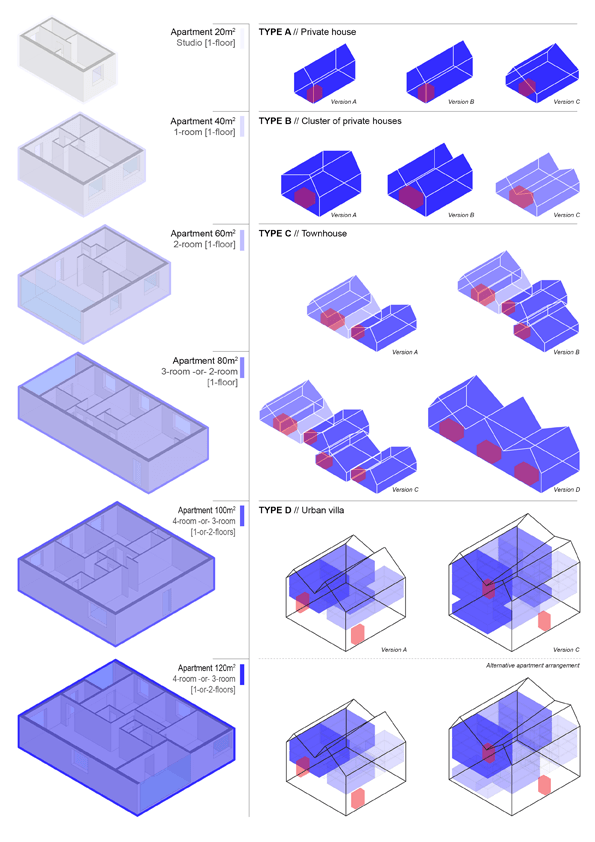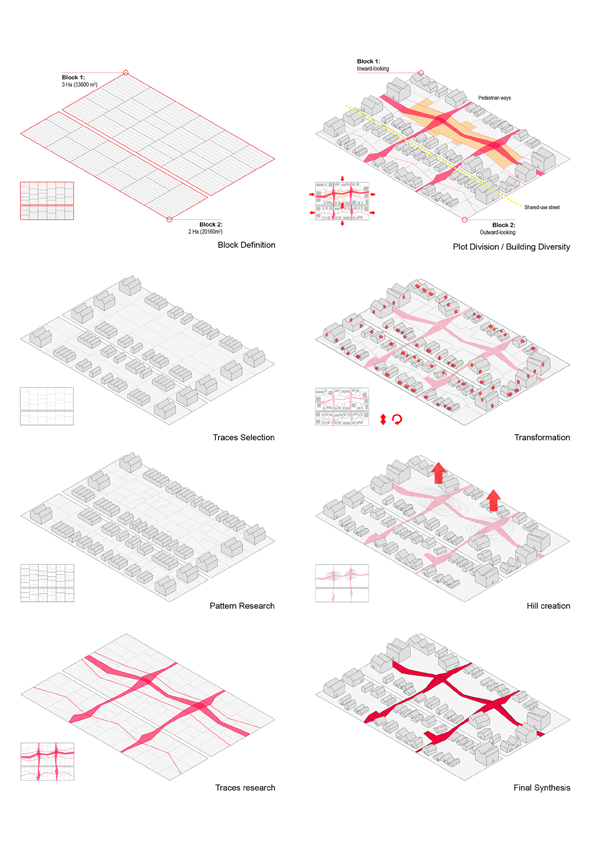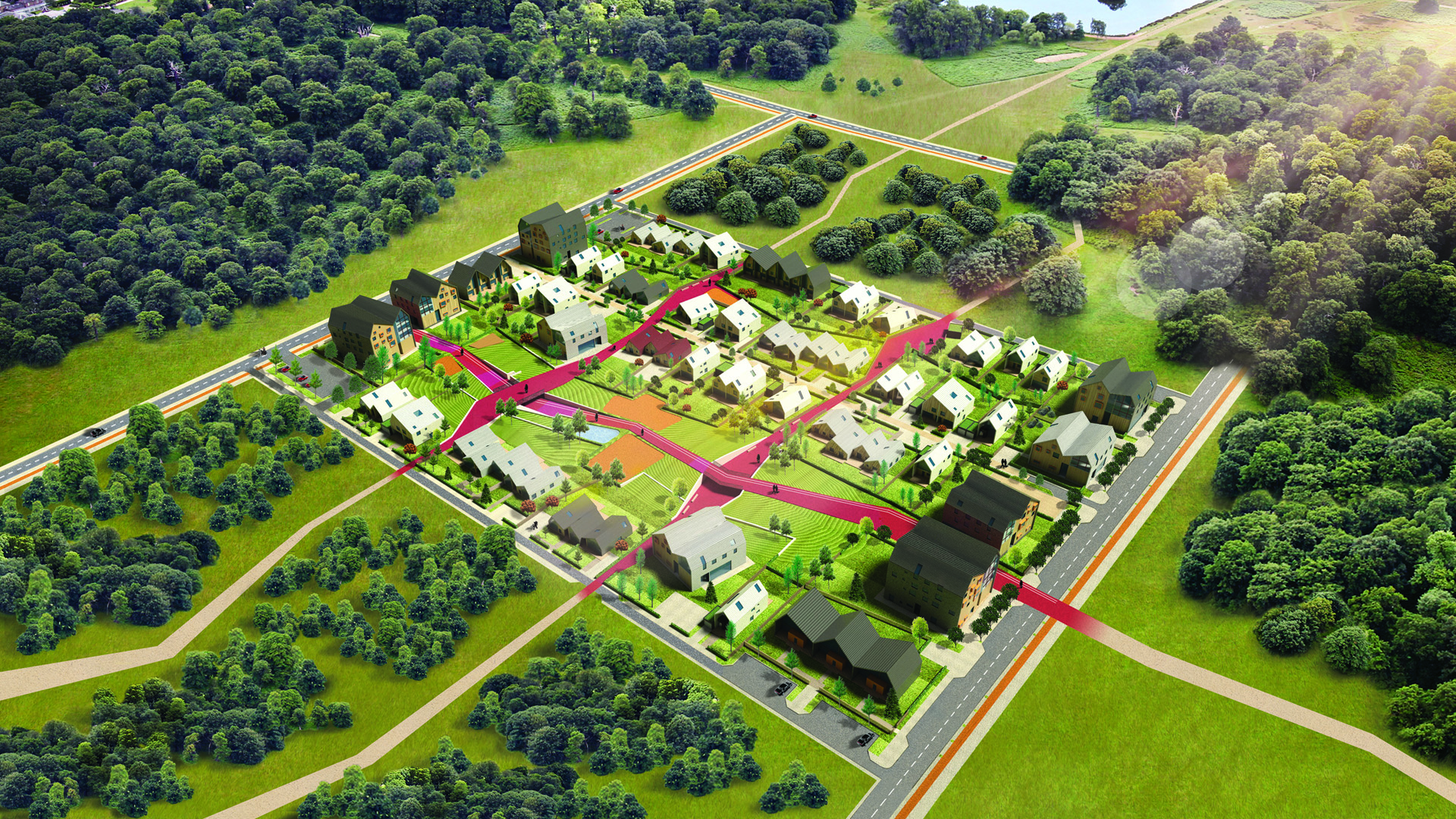
PROJECT SUMMARY
The logic of this low-growth project follows the objectives to create an organically complete cell rich of stimuli and emotions through colours, shapes, volumes, capable of creating a continuous dialogue with the surrounding environment.
Two different rectangular blocks have been designed, one measuring 3.3 ha with a central public space and the other measuring 2 ha without it. The buildings of four different types have been placed along the borders of the streets. The variety of buildings allowed us to have a greater flexibility in the aggregative process of the modules in order to obtain a variety of solutions that not only has a formal value, but also undoubtable sociological benefits.
The system of pedestrian and vehicular flows adapts itself to this philosophy. The pedestrian paths cross the block forming a central public area at their intersection, which becomes an element of social aggregation.
Significant attention has been given to the choice and use of materials and equipment to maintain climatological and environmental context, the orientation of the spaces, the control of the thermal flow, the thermal accumulation, the conservation of heat, solar irradiation and energy efficiency. In order to create a well-designed urban district, we used the solar access laws and by attaching the sunrooms to the primary buildings assured abundant sunlight in every house. The idea of comfort is related to the achievement of thermo-hygrometric conditions satisfaction, namely air quality and cooling system as well as the strategies to reduce noise.
Thermal insulation is one of the important technologies that we have used to reduce energy consumption in buildings by preventing heat gain/loss through the buildings’ envelope. The use of geothermal heat pumps and the solar water heating as well as wooden infill of the buildings are also aimed to increase the comfort and the high energy saving of the settings.
KEY DATA
| YEAR | 2018 |
| PROGRAM | Residential, Urban Design, Interior Design |
| TYPE | Competition |
| CLIENT | Strelka University, Russian Ministry of Construction |
| LOCATION | Moscow, Russia |
| BUILDING SIZE | 5 hectars |
| PARTNER IN CHARGE | Giorgio Pini |
| PROJECT TEAM | Zemfira Mammadova, Nicola Zarra, Annapina Di Filippo, Zamira Imeramzayeva, Eirini Dimou, Guendalina Talone |

